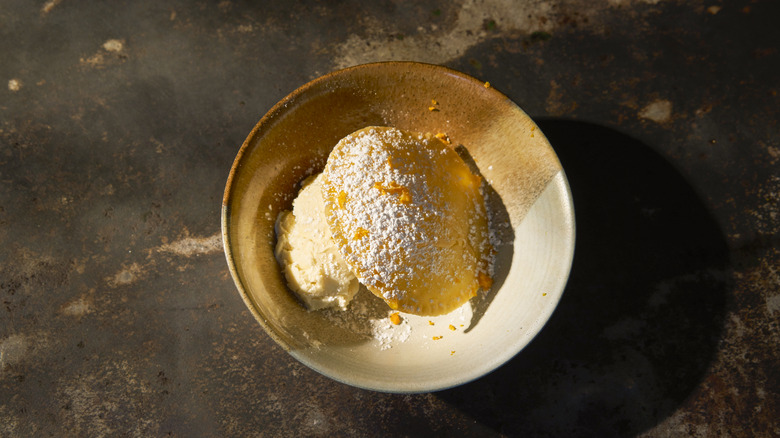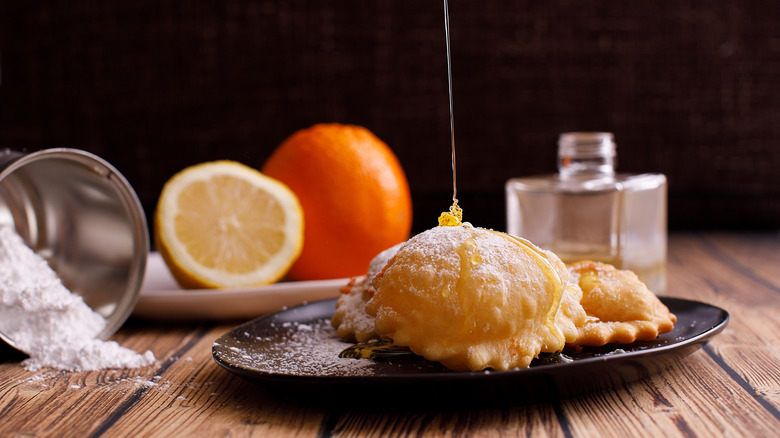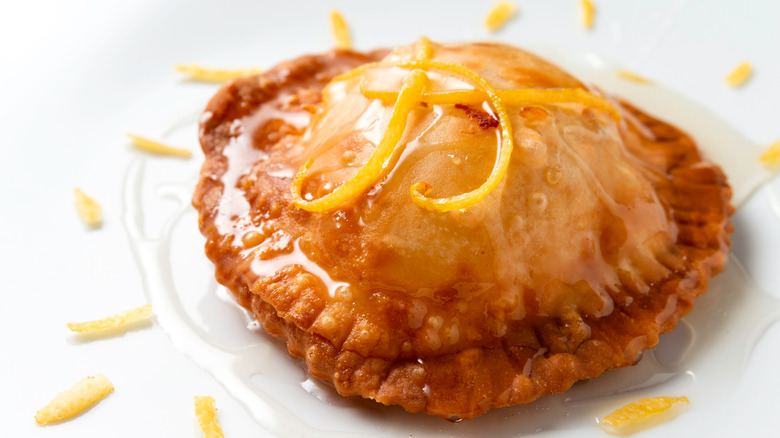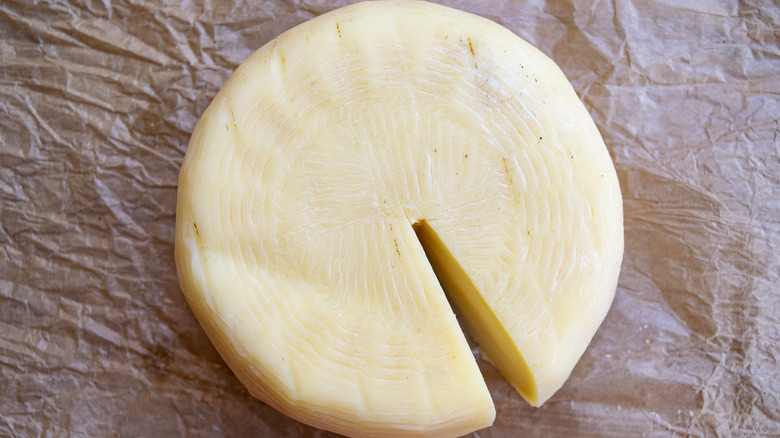Meet The Traditional Sardinian Dessert Dumplings Seadas Thanks To NYC's Epistrophy
When you think of dessert, you probably don't picture a hot, melty cheese pull, but that's exactly what you'll get from seadas, a quintessential Sardinian dessert. The Italian island boasts a unique culinary identity shaped by centuries spent bouncing between the rule of various European powers. It's internationally known for fregola pasta and its prized bottarga, but no dish is more distinctly Sardinian than seadas. These pastry dumplings are round ravioli that have been deep-fried and drizzled in honey, but slice them open, and you'll find a savory core of melted pecorino cheese.
Seadas aren't as common on international menus as other Italian dishes, as Sardinian food is often overshadowed by the cuisines of Rome, Tuscany, and Sicily. But at Downtown Manhattan's Epistrophy, Sardinian cuisine is getting the star treatment in America's most legendary culinary city, thanks to the ownership team of Luca and Giorgia Fadda and their life-long friend Nicola Paganelli, along with chef Michaela Medda, all natives of the island. Chowhound spoke to the Epistrophy team to get their insights on seadas, the dessert's history, and why this particular dish has become such an important cultural landmark.
What are seadas?
"Seadas are a conventional Sardinian sweet, made with semolina, pecorino cheese, honey, and sugar — giving [them] a piquant flavor," says the Epistrophy team. The traditional dough used for seadas is called pasta violata, which is made from durum wheat semolina, a coarsely ground type of flour generally used for pasta. While other cooks might substitute it with a softer type, more common to sweet pastries, the Epistrophy team prefers something hardier. The other essential component of the dough is lard, which gives it a crisp, flaky texture, and the filling usually incorporates citrus zest.
Seadas must be served immediately after being pulled from the fryer to ensure the pastry is crisp and flaky. To balance the savoriness of the cheese, the Epistrophy team recommends using orange blossom honey, wild herb honey, or chestnut honey, the latter of which is a staple of autumn in Italy. For an alcoholic pairing, the group says, "Seadas go well with typical Sardinian dessert liqueurs, in particular myrtle, but also limoncello. Or a dessert wine such as Moscato or Malvasia di Bosa, Vernaccia di Oristano, and Anghelu Ruju."
The history of seadas
Seadas are a byproduct of Sardinia's complicated political history, which has seen the island fall under the control of the Romans, Byzantines, Austrians, Spanish, and others over the centuries. The exact origin of seadas and their name is obscure, but it is widely believed that they were born during the Spanish rule of Sardinia, which lasted from the late 1400s to the early 1700s. The name "seadas" may have come from the Spanish word "cebar," which means "to fatten". Another theory links it to the Latin word "sebum," referring to the animal fat used to make them. In either case, it appears that the use of lard for frying as well as in the pastry is the signature trait that earned seadas their name.
Seadas were originally a food for the poorer classes, eaten by shepherds and peasants utilizing the fruits of their land. According to the team at Epistrophy, "This partly savory and partly sweet dish is traditionally prepared around Easter and Christmas on the farmer's homecoming from their pastoral fields," but they are now enjoyed year-round. While seadas have earned a reputation as Sardinia's signature dessert, in their early days, they could also have served as a main course or an entire meal. So the dish's connection to rural communities runs deep, as its filling is a nod to the island's long history and rich ecology.
The cheese that makes seadas unique
Seadas are filled with pecorino cheese, which is made from sheep's milk, an incredibly important part of Sardinian agriculture. As the Epistrophy team explains, "In Sardinia, especially in the past, only sheep were raised and the cheese was made at home. All the ingredients used were produced on-site." The team recalls watching the entire process in their childhoods thanks to family members who owned a sheep farm. The team says, "They did everything themselves from the wheat harvest to the mill, the sheep breeding, and the cheese production."
Agriculture has formed a massive part of the Sardinian economy throughout its history, with roughly 60% of the island being used for farming, particularly sheepherding. This led to the birth of pecorino sardo, or Sardinian pecorino, which should not be confused with the better-known pecorino romano (the type of cheese used for cacio e pepe). Pecorino sardo is distinct because it uses the milk of local sarda sheep, and is less salty than its Roman cousin — although today, most pecorino romano is actually made in Sardinia too).
To achieve the ideal flavor and melty texture, seadas must be made with very young pecorino cheese. While pecorino sardo is typically aged for around 40 days, and pecorino romano as long as a year, seadas should ideally use cheese that is only three days old. The longer a cheese ages, the harder it becomes, and the sharper its flavor will be. Using an exceptionally young pecorino romano makes the filling smooth, and just a little bit sweet — perfect for dessert.



